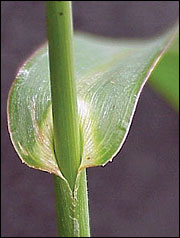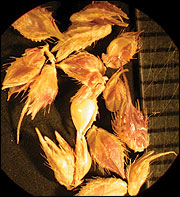Barnyardgrass
- Echinochloa crusgalli, E. muricata
Grass
Barnyardgrass is most often found growing in moist areas. The large seeds of this grass make it an important food source for bobwhites.
Scott Sudkamp, Missouri Department of Conservation
Description
To all but the most astute botanists, these two species of barnyardgrass are identical. They are annual grasses with long leaves, flattened or folded leaf sheaths, and green to purplish inflorescences. Long hairs are often found along the leaf midrib and at the nodes of the inflorescence. The bristly seed heads are quite conspicuous.
Use by bobwhites
Because barnyardgrasses are common in disturbed areas, they serve as good indicators of potential bobwhite brood habitat. While they occur in many habitats, barnyardgrasses are most likely to be found in moist areas growing in association with other early successional plants. They provide good brood habitat, and quail may roost in sparse patches of this grass.






